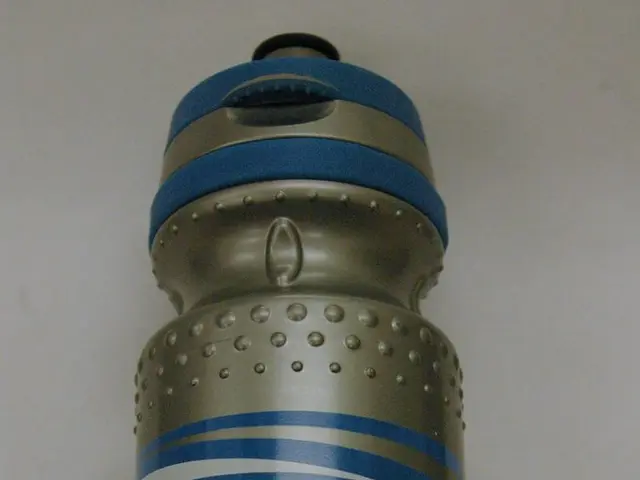Researchers successfully cultivate mini amniotic sacs in a lab setting, utilizing stem cells as raw material.
In a groundbreaking scientific development, researchers have successfully created a lab-grown model of the human amniotic sac using stem cells. Known as Post-Gastrulation Amnioids (PGAs), these biologically accurate structures hold significant potential for various medical applications and implications.
The new cell-culture method, which involves exposing embryonic stem cells to two signalling molecules, BMP4 and CHIR, allows the cells to self-organize into the desired structure. Previous attempts at modelling the amniotic sac in the lab were unable to replicate its complex 3D structure, but the PGAs form the amniotic sac's distinct two-layer structure.
One of the most promising aspects of PGAs is their potential use in personalized medicine and regenerative therapies. By creating lab-grown amniotic tissues from induced pluripotent stem cells (iPSCs), which can be generated by reprogramming a patient’s own adult cells, it is possible to produce personalized, patient-specific amniotic tissues. This minimizes rejection risks and optimizes treatment efficacy in regenerative medicine.
Currently, amniotic tissues used in clinical settings, such as in corneal repair, wound healing, and burn treatment, are sourced from donated tissues during elective cesarean deliveries. However, these tissues can be inconsistent and limited, making lab-grown variants a valuable, standardized, and renewable alternative that could overcome these logistical and supply challenges.
Moreover, the amniotic sac and its tissues have intrinsic antimicrobial and anti-inflammatory effects, making them valuable in various healing and repair processes. Lab-grown PGAs could replicate these therapeutic benefits on demand, expanding clinical use while ensuring consistency.
Researchers believe that the PGAs could also be used to model early embryonic development and congenital disorders. The amniotic sac plays an active role in signalling during early embryonic development, and creating lab-grown models enables researchers to study how the sac influences surrounding cells and developmental processes. This could shed light on why certain congenital disorders—related to amniotic sac abnormalities—occur and provide opportunities to develop preventive or corrective interventions.
In addition, the PGAs could potentially provide a reliable source of cells for medical procedures such as burn treatments and cornea reconstruction. The liquid contained in the amniotic sac is thought to be essential for healthy embryo development, and PGAs are capable of driving the transformation of nearby cells into various "extraembryonic" cell types.
While promising, further testing and validation are needed to confirm the safety, efficacy, and scalability of using lab-grown amniotic sacs and tissues in clinical applications. Researchers and translational teams are actively exploring pathways for bringing these technologies toward practical medical use.
The potential of PGAs is exciting, according to Santos, the lead researcher. The new laboratory model offers new insight into human development and could lead to cell products for medical procedures, such as burn treatments and cornea reconstruction. The PGAs can survive in their lab dishes for at least three months, providing a stable platform for further study and development.
Yi Zheng, an assistant professor in biomedical and chemical engineering at Syracuse University, suggested that further tests would be required to determine whether PGAs could provide clinically useful materials for such procedures. The gene GATA3 was found to be responsible for converting cells into amniotic sacs without any other signals, and GATA3 codes for a transcription factor that regulates BMP4 and CHIR, the same genes used in the culture protocol to create PGAs.
In summary, the lab-grown amniotic sac model from stem cells represents a scientific breakthrough with wide-ranging potential to advance regenerative medicine, personalized treatment strategies, developmental biology research, and therapeutic tissue engineering, all while addressing current limitations in sourcing natural amniotic tissues.
- The new creation, Post-Gastrulation Amnioids (PGAs), hold immense potential for science, especially in the realms of personalized medicine and regenerative therapies.
- The cell-culture method, involving BMP4 and CHIR signalling molecules, has the ability to self-organize stem cells into the complex 3D structure of the human amniotic sac.
- Previously, lab models failed to replicate the amniotic sac's distinct two-layer structure, but PGAs have managed to do so.
- The potential use of PGAs in clinical settings is significant, as they can be generated from a patient's own adult cells, reducing rejection risks and enhancing treatment efficacy.
- Amniotic tissues currently used in clinical settings, such as for corneal repair and wound healing, are sourced from donated tissues during elective cesarean deliveries.
- The inconsistency and limitation of these sourced tissues make lab-grown alternatives valuable and standardized.
- The amniotic sac and its tissues possess antimicrobial and anti-inflammatory effects, benefits that lab-grown PGAs could replicate on demand.
- Researchers believe that PGAs could be used to model early embryonic development and congenital disorders, offering insight into the causes of certain congenital disorders and potential interventions.
- The PGAs could potentially provide a reliable source of cells for procedures like burn treatments and cornea reconstruction.
- Further testing and validation are essential to confirm the safety, efficacy, and scalability of lab-grown amniotic sacs and tissues in clinical applications.
- Researchers and translational teams are actively working on pathways to bring these technologies into practical medical use.
- Santos, the lead researcher, sees Potential in PGAs, believing they could lead to cell products for medical procedures.
- PGA survival in lab dishes for at least three months provides a stable platform for further study and development.
- Further tests are necessary to determine if PGAs can provide clinically useful materials for medical procedures, as suggested by Yi Zheng.
- The gene GATA3 is responsible for converting cells into amniotic sacs without any other signals, and it regulates BMP4 and CHIR, the genes used in the culture protocol to create PGAs.
- The advancement in regenerative medicine with PGAs is encouraging, considering their potential to revolutionize industries like medicine, healthcare, and wellness.
- The scientific breakthrough could enable new opportunities in healthcare, men's health, and women's health, aiming to improve health outcomes while addressing critical medical conditions like chronic diseases and cancers.
- The world of health and wellness would also benefit from a focus on areas like fitness and exercise, sexual health, eye health, hearing, digestive health, and skin care.
- Autoimmune disorders and neurological disorders could be better treated with this advancement in biological research and therapies development.
- Climate change affects human health, and understanding our responses to environmental changes is crucial, integrating environmental science into research and healthcare systems.
- In the manufacturing sector, the development of PGAs could lead to industry advancements, with potential applications in energy, finance, and technology.
- Considering the mental health implications of stress and burnout, as common in the workplace, workplace-wellness programs could incorporate mindfulness, mental health resources, and stress management techniques.
- To address growing concerns about aging, PGAs could lead to progress in geriatrics, senior care, and longevity research, ensuring a higher quality of life for the aging population.
- Parenting education and resources are essential for navigating the challenges of raising children, with a growing focus on personalized and evidence-based parenting strategies.
- Weight management and cardiovascular health are important aspects of overall health, as obesity and cardiovascular diseases are prevalent conditions in various societies.
- As the healthcare industry continues to evolve, investing in digital health, fintech, and real estate sectors is critical, maintaining quality care while adapting to changing medical practices.
- The stock market, private equity, venture capital, and banking and insurance industries are likely to be impacted by advancements in this scientific field, fostering growth in various sectors and entrepreneurs.




